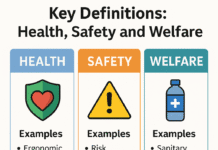
Heat Exhaustion Symptoms
Heat exhaustion is a condition that occurs when the body overheats due to prolonged exposure to high temperatures and insufficient hydration. It’s essential to recognize the symptoms of heat exhaustion to prevent it from progressing to more severe heat-related illnesses like heat stroke. In this article, we’ll delve into the various symptoms of heat exhaustion, its causes, diagnosis, treatment, prevention tips, and more.
1. Introduction to Heat Exhaustion
What is heat exhaustion?
Heat exhaustion is a heat-related illness characterized by a combination of symptoms that occur when the body loses an excessive amount of water and salt through sweating. It typically occurs in hot and humid conditions when the body’s cooling mechanisms become overwhelmed.
Importance of understanding heat exhaustion symptoms
Understanding the symptoms of heat exhaustion is crucial for early identification and prompt treatment. Failure to recognize and address heat exhaustion can lead to more severe complications, such as heat stroke, which can be life-threatening.
2. Causes of Heat Exhaustion
Heat exhaustion can result from various factors, including:
Environmental factors
High temperatures, particularly in combination with high humidity, can increase the risk of heat exhaustion. Exposure to direct sunlight without adequate shade can also exacerbate the condition.
Physical exertion
Engaging in strenuous physical activity, especially in hot weather, can lead to increased body heat production and excessive sweating, contributing to heat exhaustion.
Dehydration
Inadequate fluid intake, whether due to insufficient water consumption or excessive sweating without replenishment, can lead to dehydration, making the body more susceptible to heat exhaustion.
3. Common Symptoms of Heat Exhaustion
Heat exhaustion can manifest through a range of symptoms, including:
Excessive sweating
One of the hallmark signs of heat exhaustion is profuse sweating, as the body attempts to cool itself down. However, in severe cases, sweating may cease as dehydration worsens.
Weakness and fatigue
Heat exhaustion can cause feelings of weakness and fatigue, making it challenging to perform even simple tasks.
Dizziness and lightheadedness
Individuals experiencing heat exhaustion may feel dizzy or lightheaded, often accompanied by a sensation of spinning or unsteadiness.
Nausea and vomiting
Heat exhaustion can lead to gastrointestinal symptoms such as nausea and vomiting, as the body struggles to maintain its internal temperature balance.
4. Skin Changes and Symptoms
Pale, clammy skin
In some cases, individuals with heat exhaustion may exhibit pale, clammy skin, indicating reduced blood flow to the skin’s surface.
Flushed skin
Alternatively, the skin may appear flushed or reddened due to increased blood flow and dilation of blood vessels.
Headache
Headaches are a common symptom of heat exhaustion and may range from mild to severe, often accompanied by other symptoms such as dizziness and nausea.
5. Cardiovascular Symptoms
Rapid heartbeat
Heat exhaustion can cause an elevated heart rate as the body attempts to circulate blood more efficiently to dissipate heat.
Low blood pressure
In some cases, heat exhaustion may lead to low blood pressure, especially if dehydration is severe.
Fainting
Extreme cases of heat exhaustion can result in syncope, or fainting, due to inadequate blood flow to the brain.
6. Respiratory Symptoms
Rapid breathing
Heat exhaustion may cause an increase in respiratory rate as the body attempts to expel excess heat through breathing.
Shortness of breath
Some individuals may experience shortness of breath or difficulty breathing during heat exhaustion, particularly if they have underlying respiratory conditions.
7. Cognitive Symptoms
Confusion
Heat exhaustion can impair cognitive function, leading to confusion, disorientation, and difficulty concentrating.
Irritability
Feelings of irritability and agitation are common symptoms of heat exhaustion, often stemming from discomfort and frustration.
Slurred speech
In severe cases, heat exhaustion may affect speech patterns, causing slurred speech or difficulty articulating words clearly.
8. Diagnosis of Heat Exhaustion
Diagnosing heat exhaustion typically involves:
Physical examination
Healthcare providers will conduct a physical examination to assess symptoms and evaluate the individual’s overall condition.
Medical history
A thorough medical history, including recent exposure to high temperatures and physical activity levels, can provide valuable insights into the underlying cause of symptoms.
Laboratory tests
In some cases, laboratory tests such as blood tests may be performed to assess electrolyte levels and rule out other potential causes of symptoms.
9. Treatment for Heat Exhaustion
The primary treatment for heat exhaustion involves:
Rest and cooling measures
Resting in a cool, shaded environment and applying cold compresses or taking a cool shower can help lower body temperature.
Hydration
Rehydrating with water or electrolyte-containing fluids is essential to replace lost fluids and minerals.
Medical intervention if severe
In severe cases of heat exhaustion, medical intervention may be necessary, including intravenous fluids and monitoring in a healthcare setting.
10. Prevention Tips
To prevent heat exhaustion, consider the following tips:
Stay hydrated
Drink plenty of water, especially when engaging in outdoor activities in hot weather.
Avoid strenuous activity in hot environments
Limit physical exertion during peak temperatures, and take frequent breaks in shaded or air-conditioned areas.
Take breaks in the shade
Seek shade or cool indoor spaces periodically to give your body a chance to rest and cool down.
11. When to Seek Medical Help
Seek medical attention if you experience:
Severe symptoms
Symptoms such as confusion, fainting, or seizures may indicate a more serious heat-related illness requiring immediate medical attention.
Lack of improvement with self-care
If symptoms persist or worsen despite rest and hydration, it’s essential to seek medical evaluation.
12. Conclusion
Heat exhaustion is a serious but preventable condition that can occur during exposure to high temperatures and physical exertion. By understanding the symptoms, causes, and preventive measures associated with heat exhaustion, individuals can safeguard their health and well-being during hot weather conditions.
National Electrical Safety Month
National Safety Stand-Down to Prevent Workplace Falls
5 Unique FAQs
- What is the main difference between heat exhaustion and heat stroke? Heat exhaustion is typically milder than heat stroke and can be reversed with prompt treatment, whereas heat stroke is a life-threatening emergency requiring immediate medical attention.
- Can heat exhaustion occur in mild temperatures? While heat exhaustion is more common in hot and humid conditions, it can also occur in mild temperatures, especially during strenuous physical activity or in individuals who are not adequately hydrated.
- Are certain populations more susceptible to heat exhaustion? Yes, certain populations, such as the elderly, young children, individuals with chronic medical conditions, and those taking certain medications, may be more vulnerable to heat-related illnesses like heat exhaustion.
- How can I stay hydrated during hot weather? Drinking plenty of water throughout the day, avoiding sugary and alcoholic beverages, and consuming electrolyte-containing fluids can help prevent dehydration and reduce the risk of heat exhaustion.
- What should I do if someone exhibits symptoms of heat exhaustion? If someone shows signs of heat exhaustion, move them to a cool, shaded area, encourage them to rest and drink fluids, and seek medical assistance if symptoms persist or worsen.
























